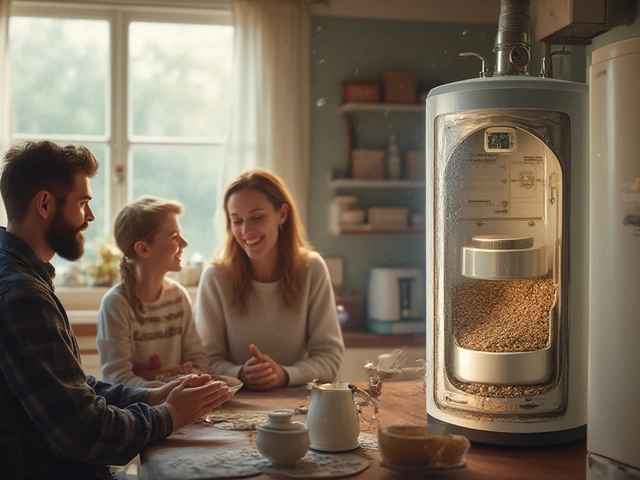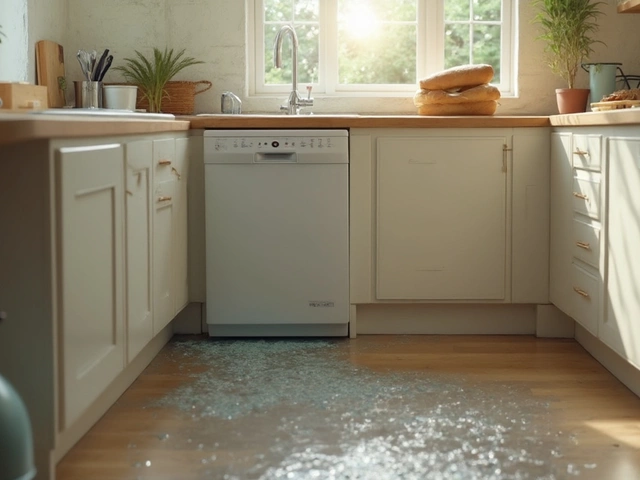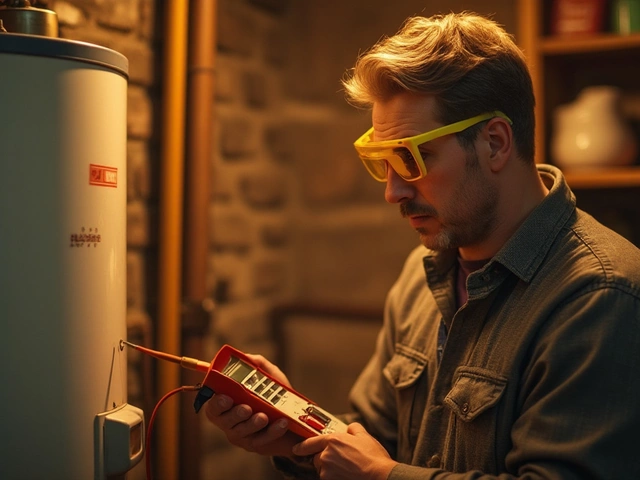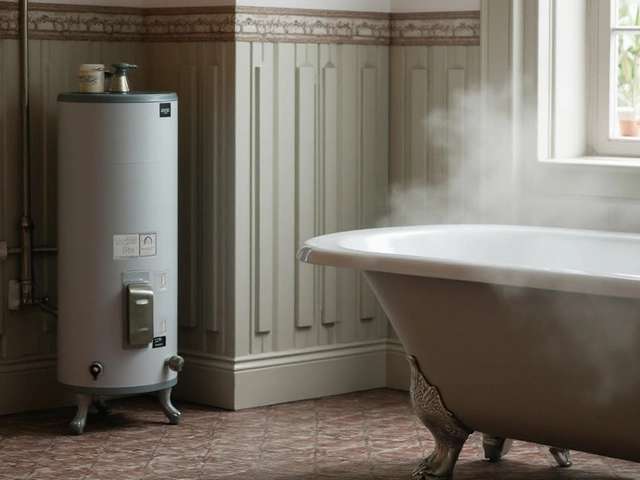We all know how annoying it is when the bathroom stops doing its job. Cold showers, steam‑filled rooms, or a fan that won’t turn on can ruin your day. Below you’ll get straight‑to‑the‑point advice for the most common bathroom appliance hiccups – from hot water woes to extractor fan fixes – plus clear signs when you should call in a professional.
First thing’s first: if you’re standing under a cold shower, the culprit is usually the water heater. Start by checking the thermostat setting – many units are set too low to save energy, which can feel like a sudden freeze. If the heater is set correctly, look for a tripped reset button on the top of the tank. A quick press can restore heat, but repeated resets mean a deeper issue like a broken heating element or sediment buildup.
Flushing the water heater once a year removes mineral deposits that choke the heating process. To do this, turn off the power or gas, attach a garden hose to the drain valve, and let the water run until it’s clear. Refill the tank, turn the power back on, and you’ll notice hotter water sooner.
When a heater is more than 10‑15 years old, watch for signs of aging: noisy operation, rust‑colored water, or frequent leaks. Those are red flags that replacement might be cheaper than endless repairs. If you’re unsure, a short phone call to a local expert can give you a realistic estimate.
Extractor fans keep moisture from turning your bathroom into a damp nightmare. A fan that whines, rattles, or barely moves air is begging for attention. The first step is to clean the grille and the internal blades. Dust and hair can block airflow, reducing efficiency and increasing noise. Turn the power off, remove the cover, and use a soft brush or vacuum to clear the buildup.
If cleaning doesn’t help, it’s time to check the motor. A motor that hums but doesn’t spin usually means a burnt winding – that part isn’t cheap to fix, so swapping the whole fan is often the smarter move. Most bathroom fans last 5‑10 years; if yours is beyond that, consider a new model with a higher CFM rating for faster moisture removal.
Replacing a fan yourself is doable with basic tools. Measure the existing opening, buy a compatible unit, and follow the manufacturer’s wiring diagram. Safety first: always shut off the circuit at the fuse box. Mount the new fan, reconnect the wires, and test the switch. If you feel any hesitation about the wiring, a qualified electrician can finish the job safely.
Regular upkeep saves money and stops mold before it starts. A quick visual check each season, plus a deep clean once a year, will keep your bathroom dry, warm, and ready for daily use.
Got a different bathroom issue that’s not covered here? Our team in Bognor Regis can diagnose and repair anything from faulty thermostats to broken fan motors. We’re fast, reliable, and happy to help you get your bathroom back to full health.

Stuck with a broken extractor fan and not sure what to do next? This article gives you practical ideas for improving air flow in your kitchen or bathroom when the fan is out of action. Learn about effective ways to keep humidity, smells, and condensation under control using simple tools and habits. Discover the pros and cons of each alternative solution so you can pick what fits your place best. Skip the stress and get the facts on dealing with bad ventilation the easy way.

Learn how often to flush your water heater, why it matters, signs it's time, mistakes to avoid, and simple steps to, maintain hot water at home.

Dishwashers are a staple in modern kitchens, but they often face common issues. So, what's the most frequent problem users encounter? This article dives into typical faults like drainage issues and proposes practical solutions. Understand why your dishwasher might not clean effectively and learn simple DIY fixes to keep it in top shape. By addressing these issues, you'll ensure your dishwasher runs smoothly for years to come.

Thinking about replacing your electric oven on your own? This article breaks down what you need to know about doing it yourself— from basic safety to common pitfalls. Learn how tricky the process can get, which tools you might need, and when it's smarter to call a pro. Get tips to save money and avoid kitchen disasters. Designed for anyone who values a good meal and a working oven.

Diagnosing a faulty hot water heater element can seem daunting, but it's an essential skill for any homeowner. Key indicators like water temperature issues, noises, and prolonged heating cycles are telltale signs of a bad element. This article provides practical advice on how to inspect and test your heater element using accessible tools. Also included are safety tips and maintenance recommendations to extend the lifespan of your water heater.

This article delves into the debate between Rheem and AO Smith water heaters, two titans in the world of home appliances. It provides a comprehensive comparison, exploring key aspects like energy efficiency, durability, and cost-effectiveness. It also highlights some interesting facts and practical tips to help you choose the right water heater for your needs. Whether you're looking to upgrade your system or repair your current unit, this guide aims to provide valuable insights.